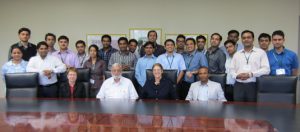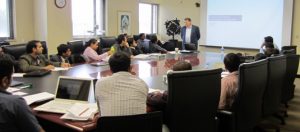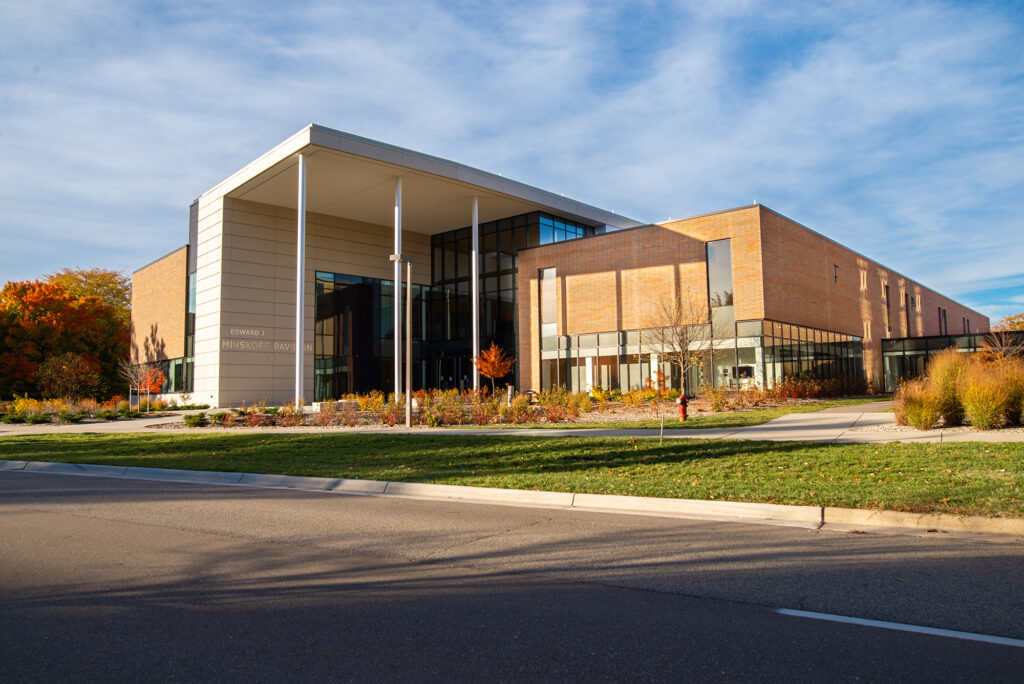A three-week immersion program in business analytics brought 22 students from S. P. Jain Institute of Management and Research (SPJIMR), one of India’s top 10 business graduate schools, to Michigan State University’s Broad College of Business in summer 2013.
These students learned from the same faculty who teach in MSU’s one-year master’s program in business analytics and applied their new data analysis skills to solving real-world problems for Steelcase and Owens Corning.
The students are part of a one-year master’s level management program at S. P. Jain, where they have an information technology focus. All of them have significant business-world experience (an average of eight years of it), and a number had already been to the U.S. as information technology consultants. But they had not yet studied analytics. Student Aniruddha Abhyankar commented that he was eager for the practice in “making sense of data […and] modeling data according to statistical techniques.”

Analytics intensive program students pose with faculty from MSU and S. P. Jain.
Analytics: a massive shift in the world of business
Modern technology creates a deluge of data—from embedded sensors to online tools capturing a trail of information about each user’s experience—and that deluge isn’t slowing down. A McKinsey Global Institute report projects 40 percent growth in the amount of data generated globally each year.
These data share never-before-available insights about individuals’ activities and open up opportunities to better understand behavior and thereby create products and services that better meet individuals’ needs.
“Analytics will be the new DNA of a modern business, if it isn’t already,” said Vallabh Sambamurthy, Eli Broad Professor and chair of the Department of Accounting and Information Systems. “It will be built around a platform of global processes, high-quality data, sound managerial judgment, and organizational culture receptive to new and often counterintuitive insights.
“This is a huge vision for how businesses will be transformed and operate in the future. Analytics-savvy business graduates will be in high demand in all sectors of the economy in a variety of business functions, including marketing, supply chain, human talent, finance, and accounting.”
“This is no longer the world of Mad Men,” said Lucy Maillette, director of new academic initiatives, referring to the popular AMC television series. “We are now able to quantify data in ways we were not able to before.”
But someone must have the analytical capability to handle the world of big data. Many companies have collected data for years, but don’t know how to organize and use it strategically in crafting business solutions. McKinsey’s report estimates that 140,000–190,000 more data analysts and 1.5 million more data-savvy executives are needed “to take full advantage of big data in the United States.”

Tim Rey, director of advanced analytics for Steelcase, addresses S. P. Jain students attending the business analytics intensive program.
Leadership in analytics studies
MSU was among the first universities to create a program of study to meet this need. In January 2013, the Broad College of Business launched a one-year master’s program in business analytics in partnership with the College of Engineering and the College of Natural Science, reflecting the boundary-spanning nature of the field of data analysis. Hands-on, real-world data projects are a foundation of the program.
When partners at S. P. Jain heard about this master’s program, they suggested developing a short-term intensive program to bring this expertise to their students. Broad and S. P. Jain faculties collaborated to design a program specialized to the S. P. Jain students’ needs.
After three weeks of practicing their new skills in analyzing data, S. P. Jain students presented their recommendations to executives from Owens Corning and Steelcase. These recommendations will guide future developments for these mission-critical business analytics projects.




